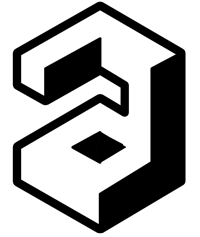Polar Solvent-Free Room Temperature Synthesis of Cspbx3 (x = Br, Cl) Perovskite Nanocubes
No Thumbnail Available
Date
2023
Authors
Journal Title
Journal ISSN
Volume Title
Publisher
Royal Society of Chemistry
Open Access Color
OpenAIRE Downloads
OpenAIRE Views
Abstract
Conventionally, colloidal lead halide perovskite nanocubes have been synthesized by the hot-injection or ligand-assisted reprecipitation (LARP) methods. We herein demonstrate a polar solvent-free room temperature method for the synthesis of CsPbX3 (X = Br, Cl) nanocubes. In addition to the commonly used ligand pair of oleylamine and oleic acid, guanidinium (GA) has been used to passivate the surface of the nanocrystals. Our study demonstrates that GA inhibits the formation of low dimensional structures such as nanowires and nanoplatelets and further supports the formation of perovskite nanocubes. In fact, GA diminishes the restricted monomer-addition effect of long-chain oleylammonium (OLAM) ions to the nanocrystal. We show that above a critical GA/OLAM molar ratio, the synthesis yields homogeneous CsPbX3 (X = Br, Cl) nanocubes. Importantly, we observe the nucleation and growth kinetics of the GA-assisted CsPbBr3 nanocube formation by using in situ absorption and photoluminescence (PL) measurements. Small nanocrystals with an excitonic absorption peak at around 435 nm and photoluminescence (PL) maxima at 447 nm were nucleated and continuously shifted to longer wavelengths during the growth period. Crucially, our method allows the synthesis of CsPbCl3 nanocubes at room temperature without using polar organic solvents. The synthesized CsPbBr3, CsPb(Cl0.5Br0.5)3, and CsPbCl3 nanocubes have PL peaks at 508 nm, 443 nm, and 405 nm, photoluminescence quantum yields (PLQY) of 85%, 58% and 5%, and lifetimes of 18.98 ns, 18.97 ns, and 14.74 ns, respectively.
Description
ORCID
Keywords
Bromine compounds, Chlorine compounds, Gallium compounds, Nanocrystals
Turkish CoHE Thesis Center URL
Fields of Science
Citation
WoS Q
Q1
Scopus Q
Q1

OpenCitations Citation Count
5
Source
Journal of Materials Chemistry C
Volume
Issue
Start Page
End Page
SCOPUS™ Citations
6
checked on Sep 18, 2025
Web of Science™ Citations
6
checked on Sep 18, 2025
Page Views
369
checked on Sep 18, 2025
Downloads
9
checked on Sep 18, 2025

Google Scholar™

